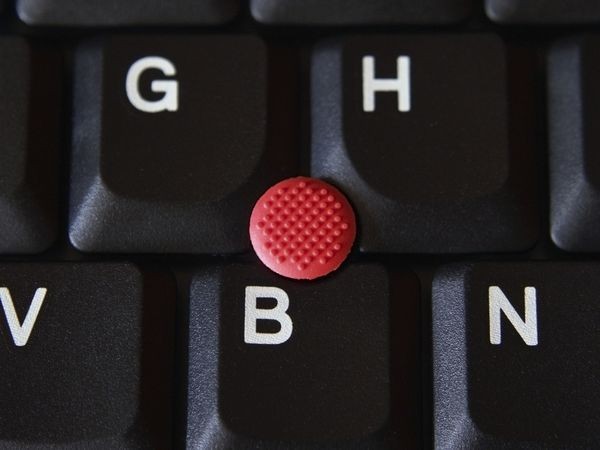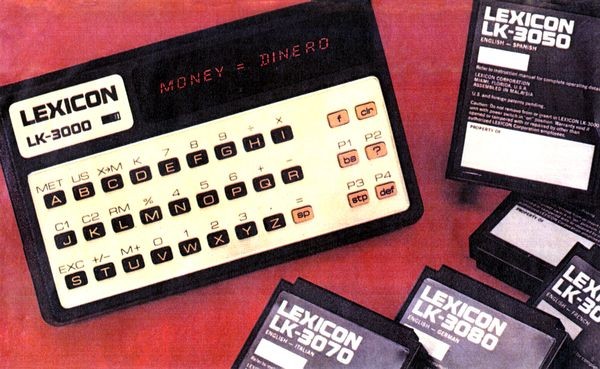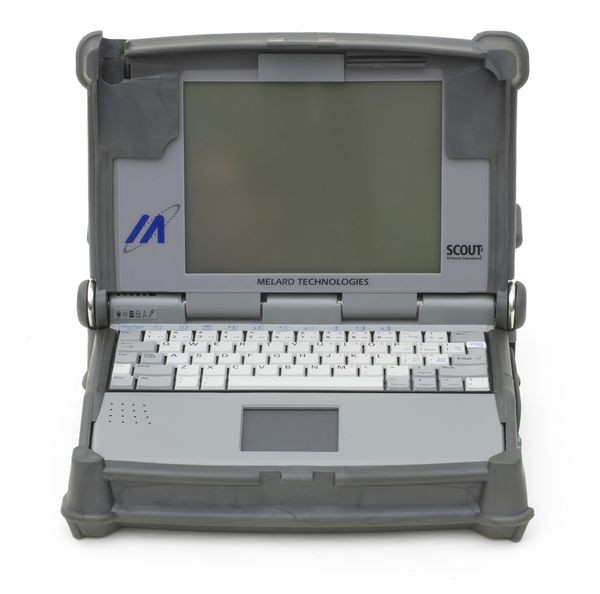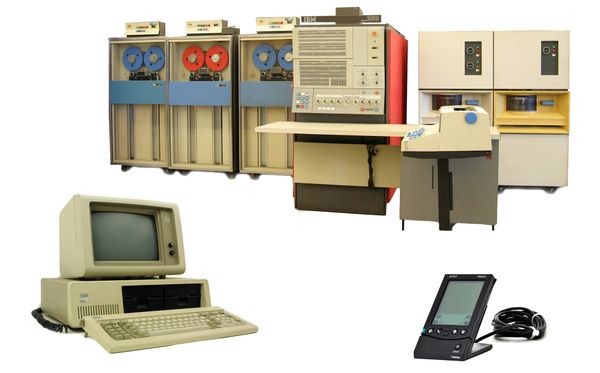Interfaces to Go
Keyboard pointing stick
Laptops and non-pen handhelds share a challenge: how to reproduce the pointing functions of a mouse in a small space? IBM’s “pointing stick” for laptop keyboards was one elegant solution.
Interfaces to Go
Portable computers with screens and keyboards similar to those of their desktop cousins could use similar interfaces. The mouse might become a trackpad, but the difference was subtle.
For handhelds, engineers had to rethink user interfaces from scratch. The small screens and the tiny or non-existent keyboards demanded new approaches.
Early one line display
The earliest generation of handhelds created surprisingly usable interfaces with as little as a single line of text. Context sensitive commands were key.
View Artifact DetailFinger interface
Apple’s iPhone introduced a touch interface operated by fingers, not a pen. It included gestures like multi-finger zoom and scrolling by “flicking.” The virtual keyboard, with its lack of tactile feedback, took getting used to.
View Artifact DetailThumb keyboard
Most early handhelds sported tiny keys that reduced even touch typists to hunt-and-peck. In the mid 1990s, effective handwriting recognition—and the two-thumb keyboards popularized by RIM—offered relief.
View Artifact DetailAnticipating New Uses
Mobile computers weren’t just small versions of big computers. Mobility invited entirely new uses—from salespeople checking prices to doctors making rounds.
Expanding the mobile market often depended on manufacturers and entrepreneurs anticipating things users might want to do, and then designing machines to meet that new need.
GridPad being used for inventory control
Inventory control and retail price checking were early successful applications for handheld computers.
View Artifact DetailHandle With Care
If you can carry your computer, you can drop it. That wasn’t a danger with mainframes.
Ruggedness was suddenly important, and “drop testing” became part of every design cycle. Engineers had to balance durability with cost. Military mobile computers emphasized ultimate toughness. Consumer products are strong enough to be practical…but no more.
Motorola MC9500 extreme cold drop test
Mobile computer manufacturers conduct drop, water, dust and vibration tests as part of product development. This high speed camera image shows an MC9500 Rugged Handheld Computer dropping at very cold temperatures, where plastics become brittle.
View Artifact DetailScout II All-Terrain Subnotebook
The rugged Scout featured water-resistant magnesium construction, rubber bumpers to absorb shock, a floating hard drive suspension and communication with the home office over the ARDIS digital data network.
View Artifact DetailThinking Small
Engineers continually squeeze more and more capability into less and less space—helpful for computers on your desk, but essential for ones carried in your pocket.
The challenges have changed. Early on, the big problem was making inexpensive display screens. Today, it’s having enough battery life for fast processors and wireless connections.
IBM 360 (1965), IBM PC (1982), and a PalmPilot (1996)
A 1960s corporate mainframe, a 1980s personal computer, and a 1990s handheld all featured roughly the same memory and processing power.
View Artifact Detail






